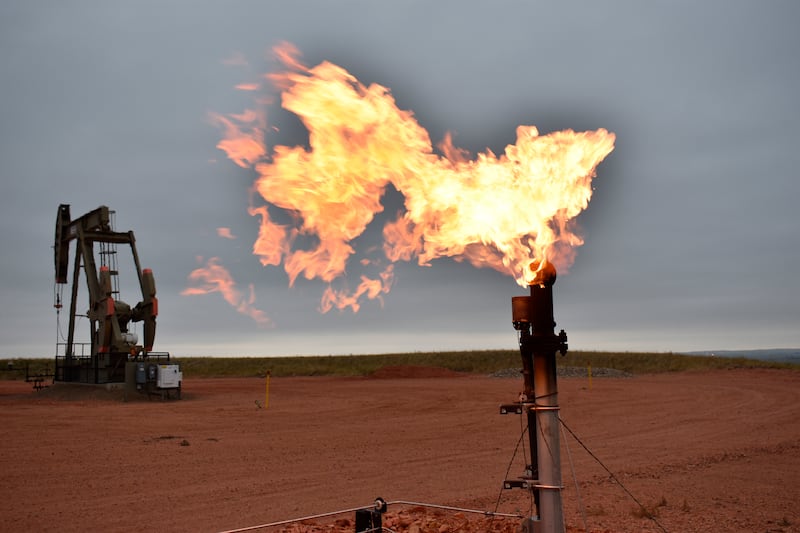Methane emissions from the energy sector stayed close to record levels in 2023, but recent regulations and fresh pledges at the Cop28 climate summit could change the trend, the International Energy Agency said.
The production and use of fossil fuels resulted in about 120 million tonnes of methane emissions in 2023, a small rise compared with 2022, it said in its Global Methane Tracker report on Wednesday.
Another 10 million tonnes of methane emissions came from bioenergy, mostly from the use of biomass for activities such as cooking, the agency said.
“A 75 per cent cut in methane emissions from fossil fuels by 2030 is imperative to stop the planet from warming to a dangerous level,” said Fatih Birol, the agency’s executive director.
“I am encouraged by the momentum we’ve seen in recent months, which our analysis shows could make an enormous and immediate difference in the world’s fight against climate change,” Mr Birol said.

Methane, a greenhouse gas, has a short-term warming potential more than 80 times greater than carbon dioxide.
After CO2 emissions, methane is the second largest contributor, caused by humans, to climate change.
Climate experts consider reducing the international output of methane emissions as the most effective and least disruptive way to slow the increase in global temperatures over the next few decades.
The agency said the top 10 emitting countries were responsible for about 80 million tonnes of methane emissions from fossil fuels last year, representing two thirds of the global total.
The US – the top oil and gas producer – was the largest emitter from oil and gas operations, closely followed by Russia. China was the highest emitter in the coal sector.
Satellites identified a “substantial” increase in fossil fuel leaks last year compared with 2022, with more than 5 million tonnes of emissions detected, including from a well blowout in Kazakhstan that went on for more than 200 days, the agency said.
Governments and independent climate-tracking bodies have been relying on satellites to detect methane releases.
In the next few years, several newly developed satellites with significantly improved resolutions are scheduled to be launched.
MethaneSat, a satellite backed by Alphabet's Google and the Environmental Defence Fund group, was launched this month to pinpoint oil and gas industry methane leaks from space.
“Well-known policies and existing technologies could reduce methane emissions from fossil fuels substantially,” Mr Birol said.
“We will continue to monitor progress – a key part of our wider efforts to ensure countries deliver on the energy promises they made at Cop28,” he added.
'Historic' global stocktake approved at Cop28 in Dubai

At the UN climate summit in Dubai last year, about 200 governments agreed to “substantially” reduce methane emissions by 2030. Significant regulatory initiatives were announced by Canada, the EU and the US.
Fifty oil and gas companies, representing more than 40 per cent of global oil production, signed the Oil and Gas Decarbonisation Charter, which calls for net-zero emissions by 2050 or before.
They are also aiming for “near-zero” upstream methane emissions and zero routine flaring by the end of the decade.
If all methane pledges are implemented in full and on time, it would be sufficient to half methane emissions by 2030, the agency said. It added that most pledges were not yet backed up by plans to introduce.
Reducing methane emissions from fossil fuel operations can be highly cost-effective, the agency said.
About 40 per cent of these emissions last year could have been prevented at no extra cost, as the captured methane's value exceeded the cost of reducing emissions.
The agency said to achieve a 75 per cent reduction by the decade's end, an estimated $170 billion investment would be needed, which is less than 5 per cent of the fossil fuel industry's 2023 income.






